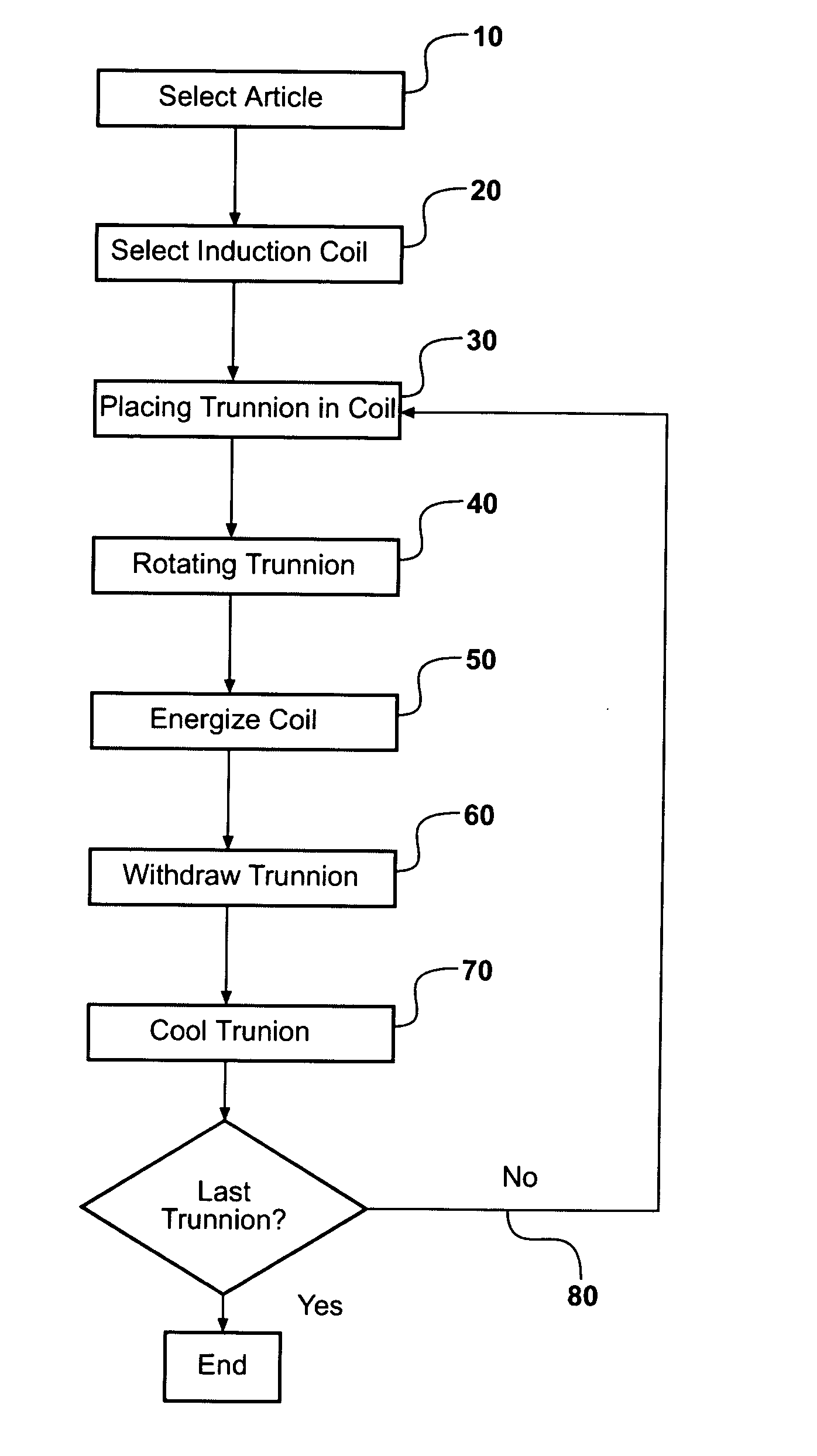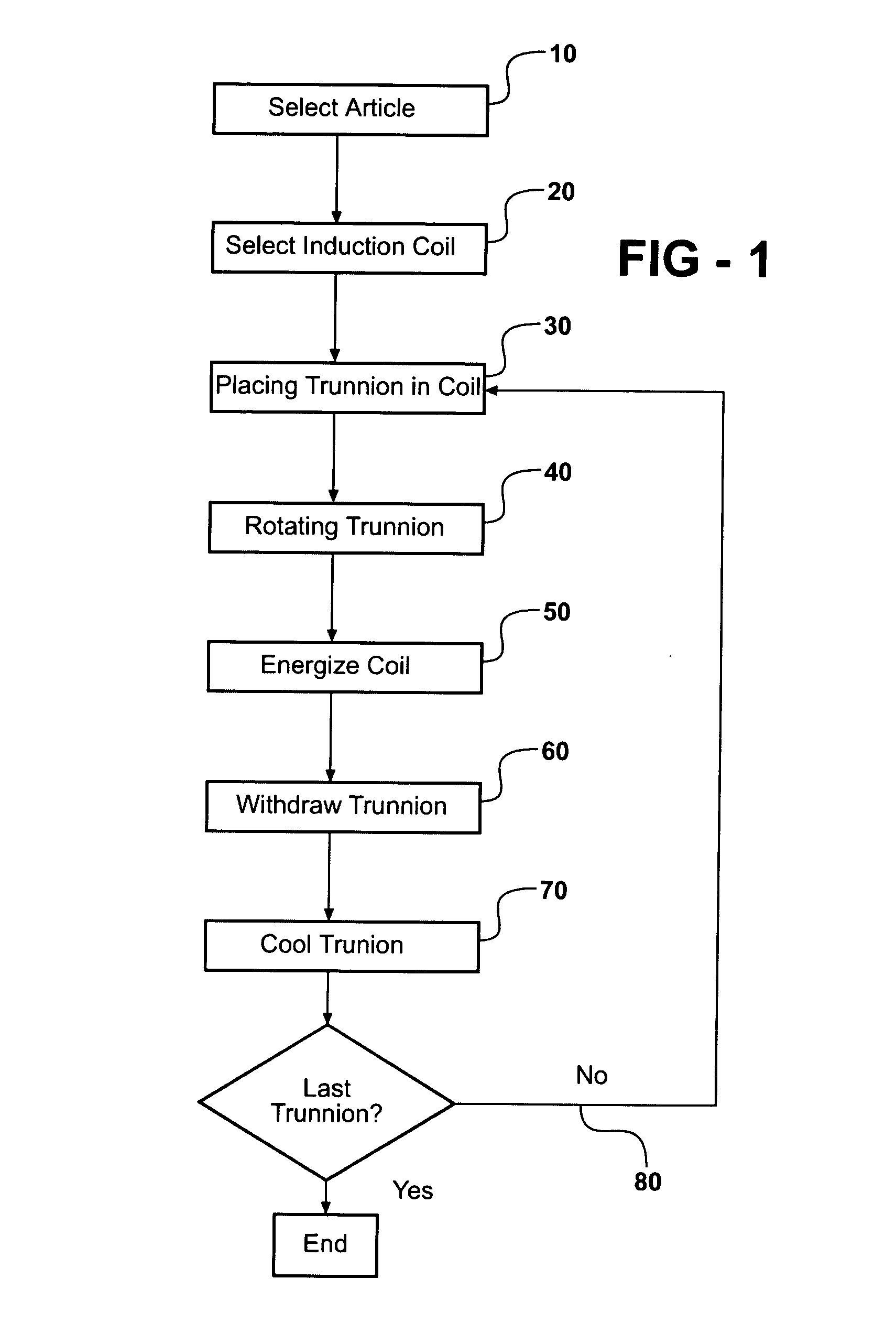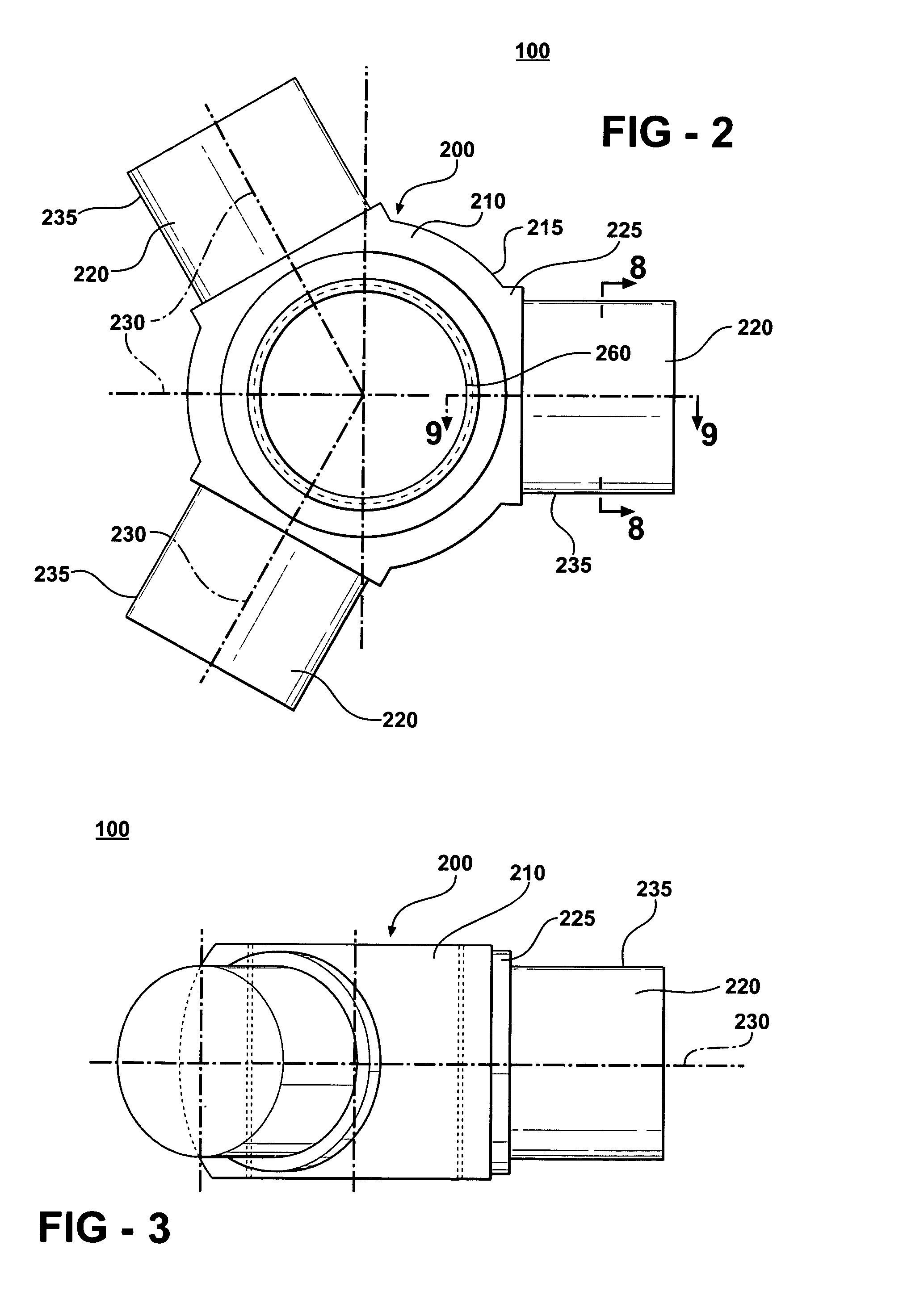Induction heat treatment method and article treated thereby
a carburizing process and induction heat treatment technology, applied in heat treatment apparatus, couplings, furnaces, etc., can solve the problems of unsatisfactory results, unsatisfactory results, and inability to achieve the effect of improving the metallurgical and mechanical properties of components, improving the production of such components, and improving the quality of finished parts
- Summary
- Abstract
- Description
- Claims
- Application Information
AI Technical Summary
Benefits of technology
Problems solved by technology
Method used
Image
Examples
Embodiment Construction
[0031] Referring to FIGS. 1-7, the present invention generally comprises a method 1 of induction heat treatment, comprising the steps of: (1) selecting 10 an article 100, such as spider 200, for heat treatment comprising hub 210 having hub surface 215 and a plurality of angularly spaced trunnions 220 extending from a corresponding plurality of trunnion shoulders 225 formed in the hub surface 215, each trunnion shoulder 225 having a trunnion shoulder surface 245, and each trunnion 220 having a trunnion axis 230 and a trunnion surface 235; (2) selecting 20 an induction coil 300, which is adapted to receive a trunnion 220 for heat treatment and apply a magnetic field to the trunnion surface 235 and trunnion shoulder surface 245; (3) placing 30 a trunnion 220 within the induction coil 300 with its corresponding trunnion shoulder 225 adjacent to the induction coil 300; (4) rotating 40 the trunnion 220 within the induction coil 300 about the trunnion axis 230 at a selected speed; (5) ener...
PUM
| Property | Measurement | Unit |
|---|---|---|
| Temperature | aaaaa | aaaaa |
| Depth | aaaaa | aaaaa |
| Temperature | aaaaa | aaaaa |
Abstract
Description
Claims
Application Information
 Login to View More
Login to View More - R&D
- Intellectual Property
- Life Sciences
- Materials
- Tech Scout
- Unparalleled Data Quality
- Higher Quality Content
- 60% Fewer Hallucinations
Browse by: Latest US Patents, China's latest patents, Technical Efficacy Thesaurus, Application Domain, Technology Topic, Popular Technical Reports.
© 2025 PatSnap. All rights reserved.Legal|Privacy policy|Modern Slavery Act Transparency Statement|Sitemap|About US| Contact US: help@patsnap.com



